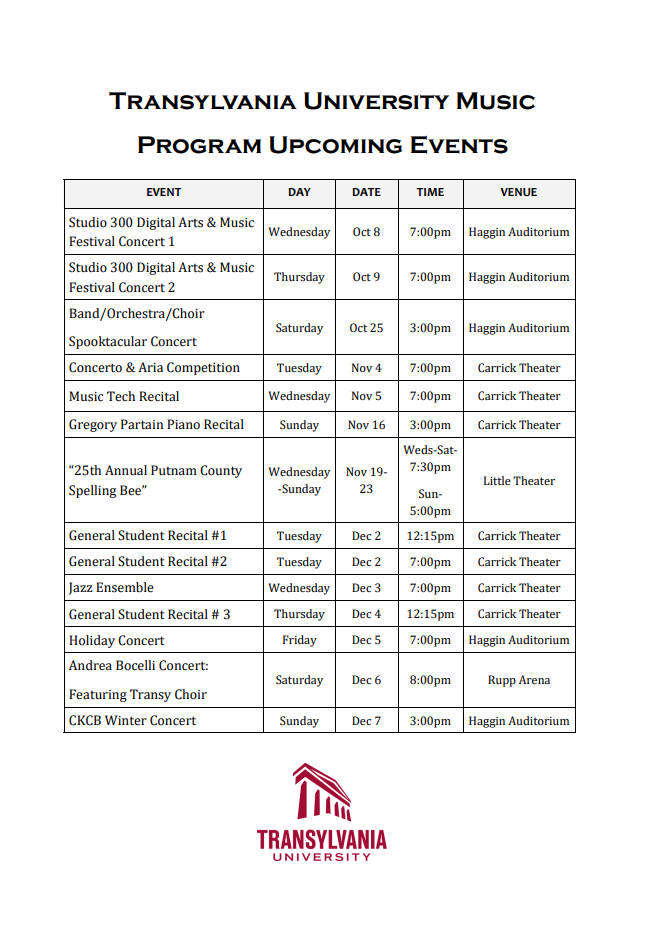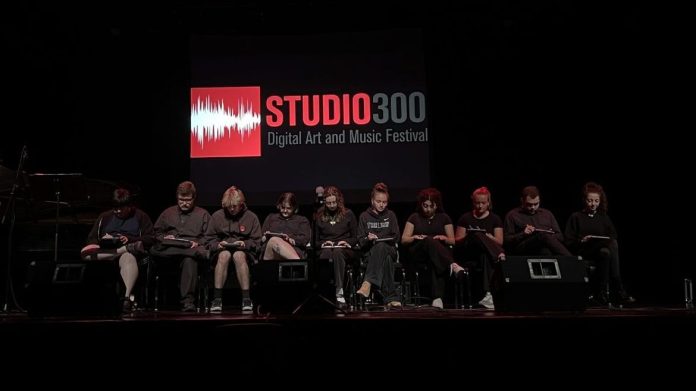
Cutting-edge sound… futuristic technology… all-encompassing music… In one way or another, Studio 300 is undeniably impressive in the digital art and music scene. The festival, orchestrated by Dr. Tim Polashek, features various professors, students, and performers from not only Transylvania but also the Universities of Kentucky and Louisville.
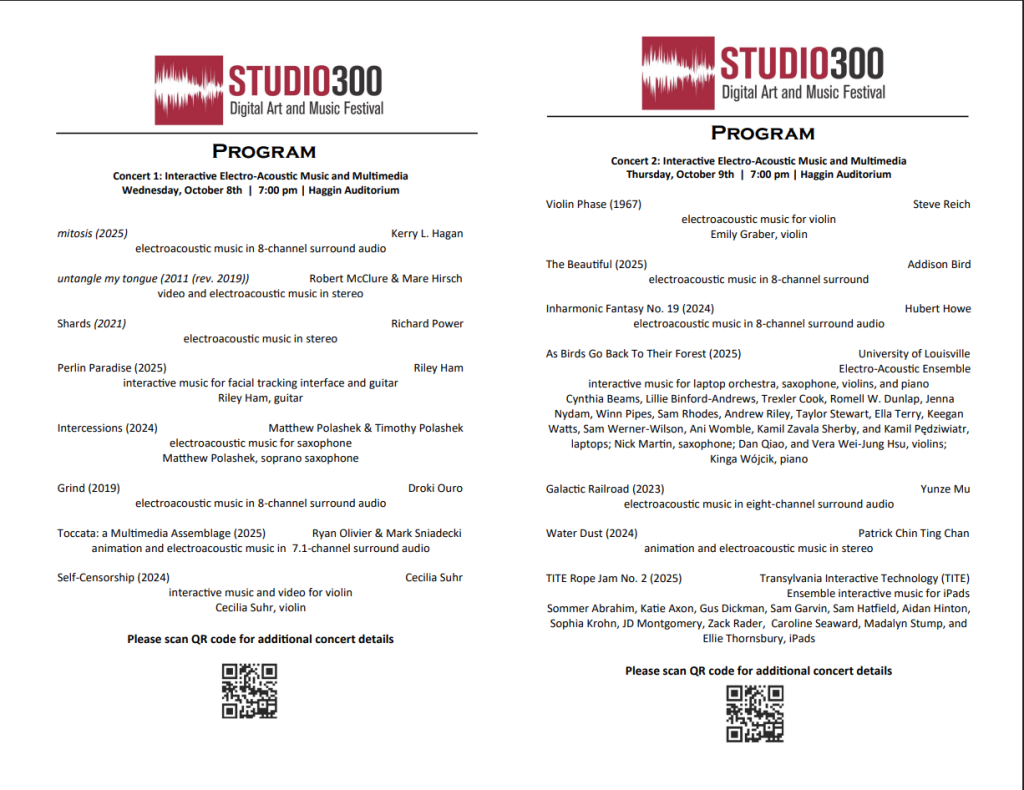
As a musician myself, I walked into Haggin Auditorium on Thursday, October 9, with expectations of being blown away by surround sound and interactive music-making; I sat down eagerly beside my friends, hoping to find inspiration from the unique approach to art. While the two-hour experience did leave me speechless, my lack of words was a result of fear.
Wait… fear? How could a music festival bring distress to an audience member? Well, imagine being abducted by a group of invisible aliens. You can’t see them, and you can’t feel them, but you can hear their repetitive noises driving you into insanity. You can sense the booming of their spaceship in your chest. You can perceive their neon lights as you defy gravity, levitating in the air.
Now, such descriptions of supernatural fright may seem unwanted for non-horror lovers. However, the unsettling volume and bright lights all played into the incredible performances of the festival. Despite only attending one of the two interactive nights, I still processed the time, effort, and creativity put into each act.
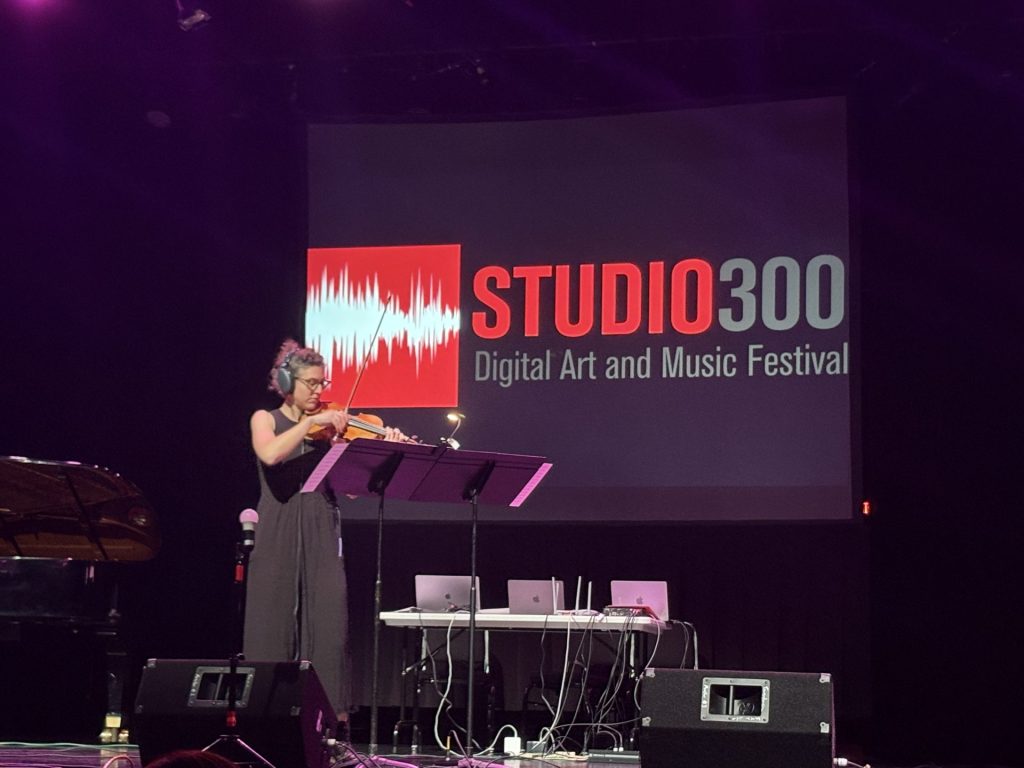
Igniting the auditorium with an electroacoustic piece on violin, Dr. Emily Graber executed a piece by the name of Violin Phase, in which she inspired feelings of anticipation and anxiousness in audience members. Graber’s repetitive melodies, harsh bowing, and interactive composition were stressfully enchanting to listen to, and acted as the motor for the alien spaceship, endlessly running to fuel Studio 300.
The following two pieces were both electroacoustic music in 8-channel surround audio, yet had utterly different purposes. Addison Bird described her piece, “The Beautiful,” as encapsulating the bittersweet reality of technological advancement in America. While beneficial to electronic art forms, technology has paved the way to become an isolating entity, leaving people feeling empty and alone in the digital world (Studio 300 Full
Program). In contrast, Hubert Howe created Inharmonic Fantasy with the intention of digitally executing what no human could: the 19-tone equal temperament. To put it in simple terms, Howe wanted to research and enact a piece composed of inharmonic partials, which are too precise to be performed by human instruments (Studio 300 Full Program). The sounds conveyed by both pieces left a sense of shock and thrill in all listeners; Bird and Howe lured the audience into the Studio 300 spaceship with excessive volumes and enthralling note changes.
The fourth performance of the night was a mixture of a laptop ensemble and acoustic instrumentalists from the University of Louisville. With animations of birds orchestrated by students on laptops, along with bird and nature sounds produced by a saxophone and several violins, listening ears were carried through a magical thicket. As Birds Go Back to their Forest, played the role of the spaceship ascending into the air, sending audience members to the new land of musical enlightenment.
Also from the University of Louisville, professor Yunze Mu found purpose in his 8-channel surround sound piece through personal heartbreak (Studio 300 Full Program). Basing his composition on the endless search of blind love, Mu combined metaphors of galactic trains with dynamic audio. The programmer’s piece, Galactic Railroad, became the speed of the alien spaceship, rushing the audience past the starry remnants of old lovers.
The succeeding piece to the electroacoustic story was an animation by the name of Water Dust. Composed by Patrick Chin Ting Chan, the graphics of geometric cubes, transformative shapes, and weaving colors questioned the dimensions and boundaries of worldly elements and emotions (Studio 300 Full Program). The philosophical soundscape acted as the cool down to the overwhelming abduction; audience members had a chance to collect their once troubled minds and relax in calm uncertainty.
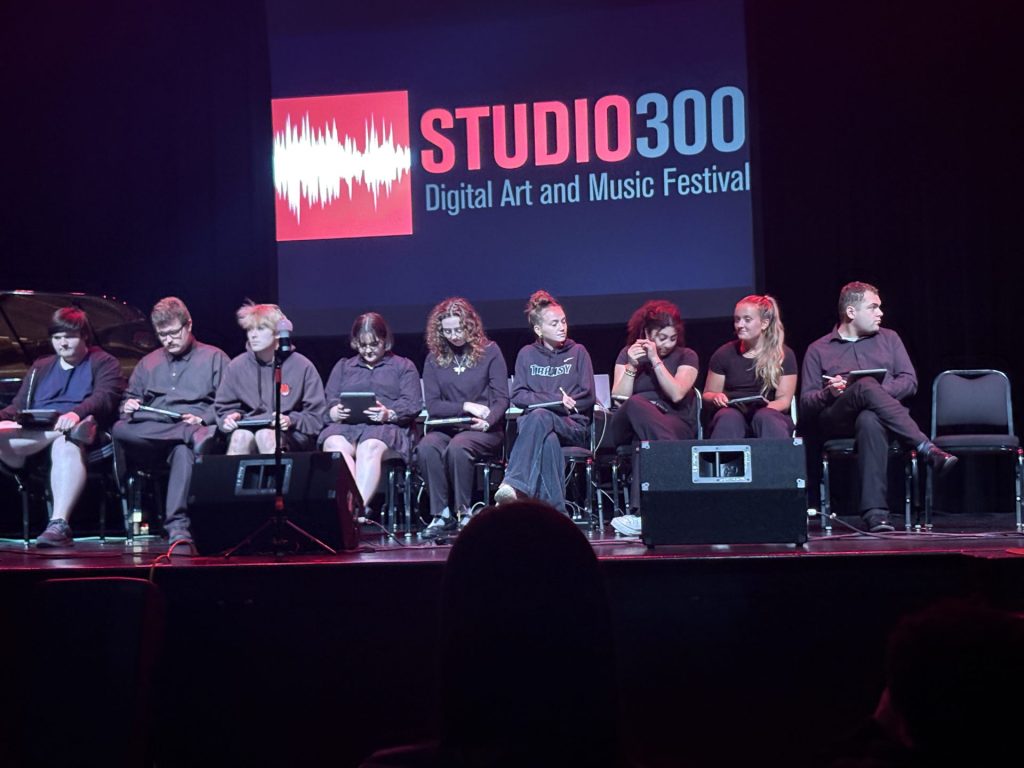
The final night of Studio 300 concluded with a performance by TITE (Transylvania Interactive Technology Ensemble). Students from Polashek’s Interactive Music and Multimedia class had the opportunity to create individual sounds and apply them to iPad interfaces (Studio 300 Full Program). The controlled chaos ensued within the bounds of the stage, functioning as the audience takeover of the spaceship! Independent noises from the performers’ iPads led the revolution to seize the ship and find the audience’s way back home with new findings in music.
The Studio 300 Festival may have been one-of-a-kind in its relation to alien abductions; however, the eerie theme has not subsided in the Music Program. Show up to the Spooktacular Concert on Saturday, October 25, for an afternoon of ghostly melodies!
